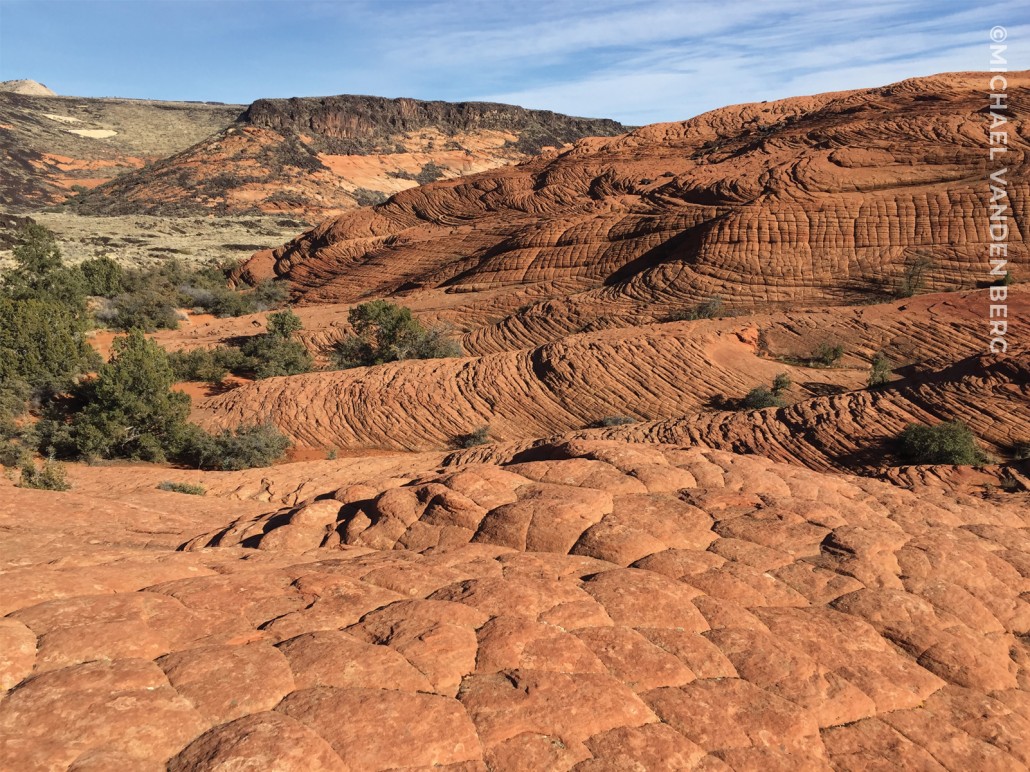Tag Archive for: Snow Canyon State Park
ksl.com
SNOW CANYON STATE PARK — If you’re looking to get off the trail and explore the treasures of Snow Canyon State Park, the Petrified Dunes hike is the place to go.

Snow Canyon State Park, Washington County
Photographer: Paul Inkenbrandt © 2016
 Snow Canyon State Park, Washington County, Utah
Snow Canyon State Park, Washington County, Utah
Photographer: Daniel King; © 2013
Eroded fragments of a dark ironstone layer contrast sharply against the pale-orange Jurassic-age Navajo Sandstone at Snow Canyon State Park. In places, the iron- and manganese-rich ironstone forms a resistant cap at the top of sandstone columns or pillars called hoodoos.
 Snow Canyon State Park, Washington County, Utah
Snow Canyon State Park, Washington County, Utah
Photographer: Janice Hayden
A blanket of snow is a rare occurrence in Snow Canyon State Park in southwestern Utah. The Early Jurassic-age Navajo Sandstone forms the jointed red cliffs and rounded “turtlebacks” while the 27,000-year-old Santa Clara lava flow fills the canyon, flattening out the valley floor.
 Snow Canyon State Park, Washington County, Utah
Snow Canyon State Park, Washington County, Utah
Photographer: Michael Vanden Berg
Eroded cross-beds in the Navajo Sandstone capture spherical hematite (iron oxide) concretions that have weathered out of overlying strata. The Navajo Sandstone comprises “fossilized” sand dune deposits of Early Jurassic age.
Snow Canyon State Park, Washington County, Utah
Photographer: Ben Everitt
As our follower Ben Everitt pointed out, we tend to post a lot of big scenery photos. We love getting feedback from our users, and so you may have noticed the last few days of photos have been more than our usual photos of our amazing geology.
Today’s photo shows geology in action. In today’s photo, submitted by Ben Everitt, wind is slowly moving the dunes at Snow Canyon State Park. The park, which consists of lava flows and large sandstone cliffs, is located inside the 62,000 acre Red Cliffs Desert Reserve. The federally mandated reserve was established to protect the threatened desert tortoise and its habitat. Snow Canyon Park is a reminder that beauty and life can be found in some of the harshest places on earth! Thanks for the submission!
Remember, you can always submit your photos to us on Facebook, Twitter, or at ugssmedia@gmail.com. We love to hear from you.
 Snow Canyon State Park,
Snow Canyon State Park,
Washington County, Utah
Photographer: Tyler Knudsen
About 27,000 years ago, lava flowed on top of the Navajo Sandstone, forming black “ropey” basalt in Snow Canyon State Park, Washington County.
Utah is peppered with volcanoes and other signs of the hot molten rock (magma) that forms within the crust beneath us. Magma, less dense than the surrounding solid rock, rises where it can and intrudes into adjacent rock to form laccoliths, batholiths, dikes, and sills upon cooling. It can also extrude onto the surface as lava, sometimes explosively ejecting lava fragments and ash. The resulting igneous rocks can vary widely in appearance.
Snow Canyon State Park, Washington County, Utah
Photographer: J. Buck Ehler
Iron concretions lie on top of the Navajo Sandstone in Snow Canyon State Park, Washington County. Utah’s red sandstone contains an iron-oxide mineral called hematite. When hematite is bleached from the sandstone, the stone appears almost white. When hematite is concentrated in concretions, they can appear almost black.







